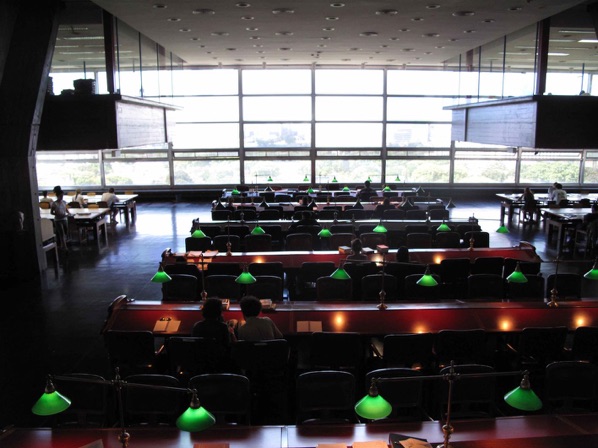Thoughts on Autoteatro and The Quiet Volume, by Ant Hampton
-
-published by La Otra Parte (Buenos Aires), November 2010
Spanish text here.
____
The term 'audience participation' will often produce a shiver of angst. After all, it's not often the risk pays off. The horror of being yanked up on stage and surrounded by grinning actors may even have entered the realm of collective nightmare. I certainly don't like it, so I suppose it might seem strange that my work seems to be so often geared to an audience performing the piece 'themselves'.
'Autoteatro' works, so far, by participants following a series of instructions, often via headphones, which lead them into alternating roles of performer and audience. In Etiquette, created in 2007 with Silvia Mercuriali - the first Autoteatro show and the last under the name Rotozaza - the starting point for this was conversation; we figured that when couples get together in a cafe, there's always someone speaking and the other listening - actor and audience - under the implicit contract that those roles are regularly swapped. When we want to sound like engineers, we talk about 'mechanisms for self-generating performance'.
Almost certainly, it's the fact that you're alone which allows this to escape the vexed notion of audience participation mentioned above. You're alone with each other in the awareness of the performance happening, and yet you're in public space, surrounded by others oblivious of anything taking place. As always, the private and public spheres rubbing together create a certain thrill.
For years I've been in love with the strange quality of performance that comes from an 'unrehearsed' actor, or as is more often the case, ‘non-actor’, agreeing to be watched, agreeing to try, to invest and risk themselves in a performative situation. Autoteatro proposes a shared risk with no-one else watching except that strange 'audience' we keep behind our eyes, that imagined mass of people against which our subjectivity is measured.
Another obsession is practicality. I've always been jealous of, for example, electronic musicians who are able to work anywhere from a laptop and produce weightless, scale-able products: they hand you a CD (or just send you a link) and say 'here's my work'. As theatre-makers we learn to get used to long, heavy, expensive processes and an end product which disappears the moment our bodies are no longer engaged.
Of course, writers avoid this problem too. They can work pretty much anywhere and their work tends to stick around... 'scripta manent'. So for a while I'd had it in mind that a book could be an interesting place to explore the Autoteatro device. A book whose reading triggers a performance directly. Then I read this on Tim's blog, which prompted the suggestion to collaborate on The Quiet Volume:
(...) I’ve been exploring for some time the ways that text always conjures (stages) presence, and the ways that its progress on and over pages is (or parallels) a kind of temporal performative process. The page, for me at least, has something that might be considered a dramaturgical now – a moment in the process of narrative or argument, a moment, or set of moments in which the presence of reader/viewer and writer or staged subject find themselves together, in different realities but joined across space and time. This now of the page is what grips me - the present moment, this one, summoned here with this arrangement of marks/code, ink/pixels, letters and word.
- Tim Etchells
Reading Tim’s text, I began to understand that the phenomenon of reading can indeed parallel what I’d been trying to do with ‘Autoteatro’ - to create a balance of participation and surprise, and an awareness of being both in and under control. Perhaps a book can be seen as the ultimate portable theatre or event space; a compressed, codified version of both 'black box' theatre and 'white cube' gallery, flattened into white squares and black lines. As readers / listeners / do-ers / participants, we enter that flat world and enable the strange, triangulated dance between finger, eye and imagination. The flat event space begins to expand and gain volume. The slow speed of a finger running along a line of text starts to bend time; slowing it, doubling it, stretching it.
It's a strange kind of magic, a unique process akin to transport. As such, in a functional way, libraries can be thought of as similar spaces to airports, or train stations. No-one comes to a library to stay there. As part of a festival interested in generic city spaces (Ciudades Paralelas), and with the idea of the work responding to their functions, it seems right if The Quiet Volume sometimes behaves as though it can't decide whether to 'take place' in the library itself or within the pages of the various books our audience picks up and reads.
- Ant Hampton, 01.10.2010



